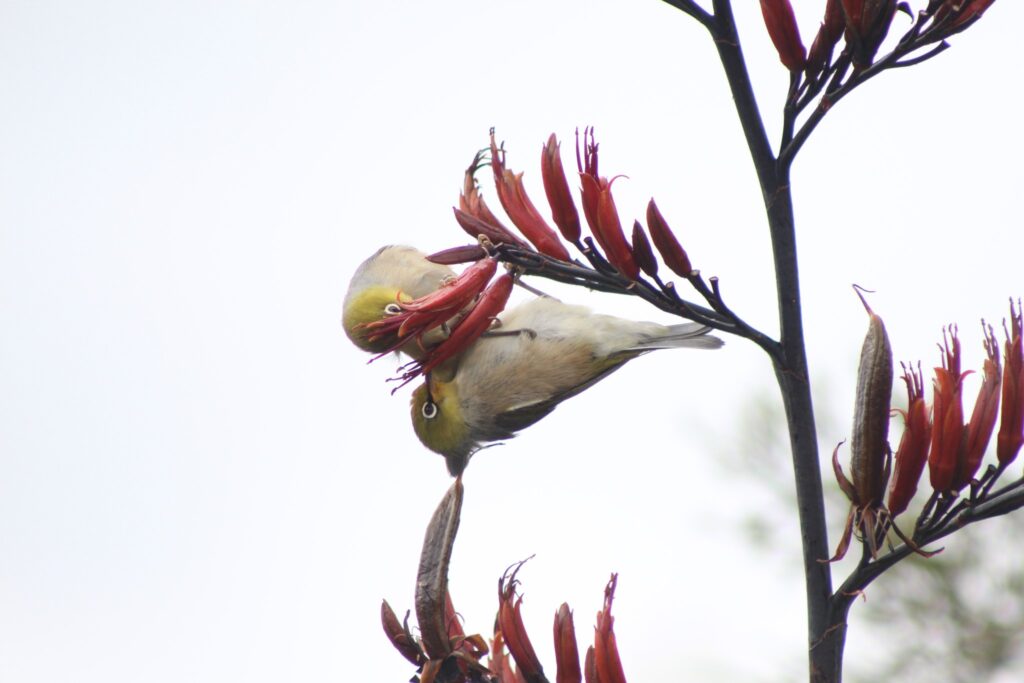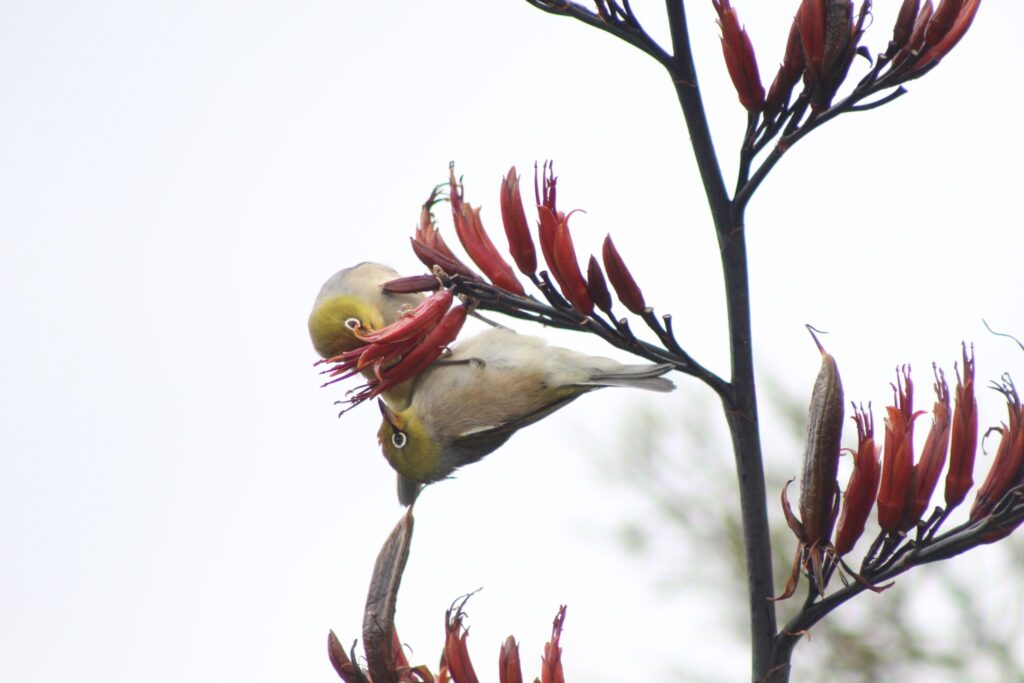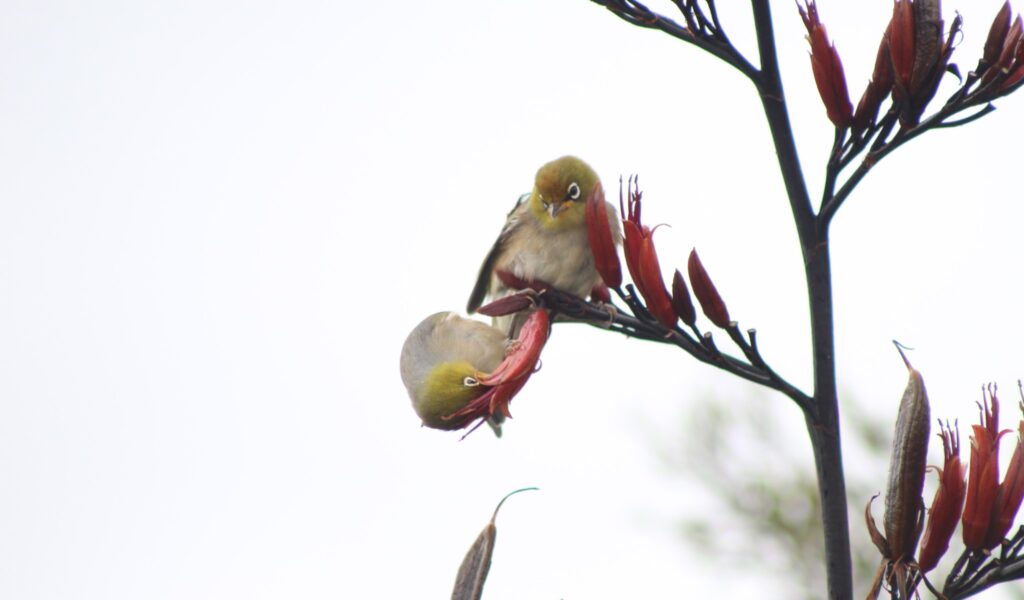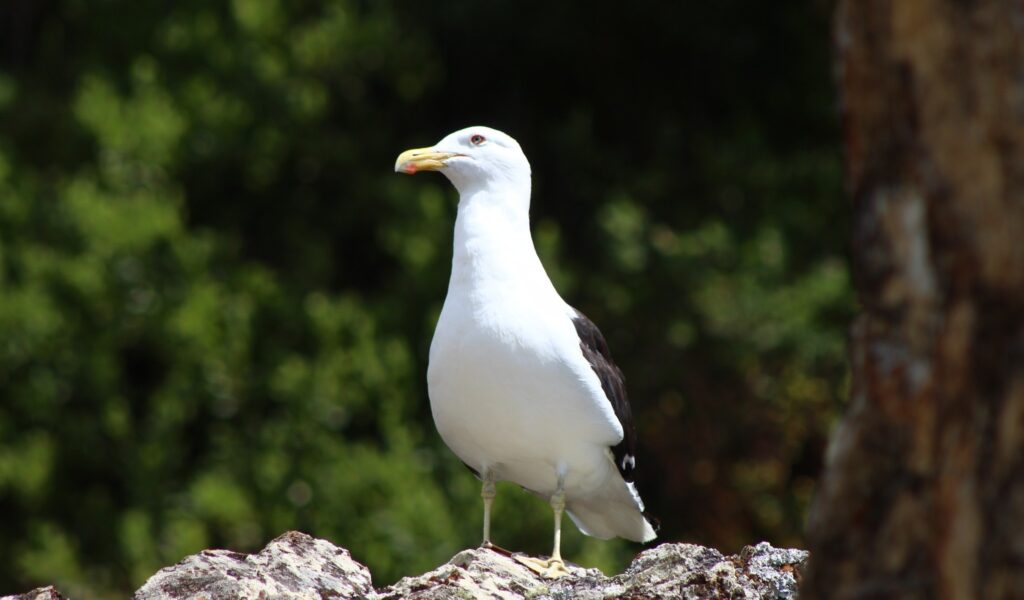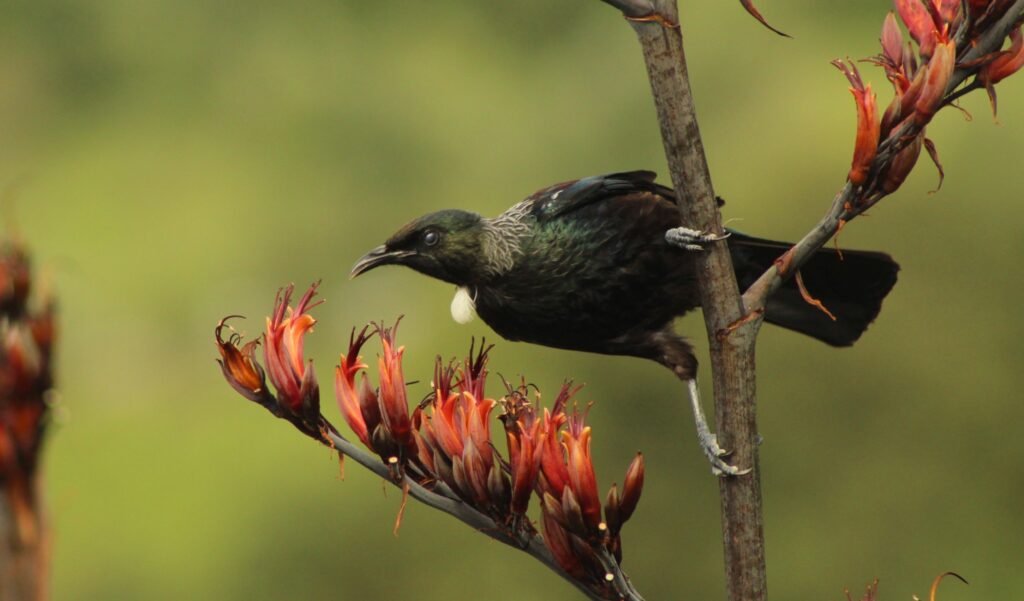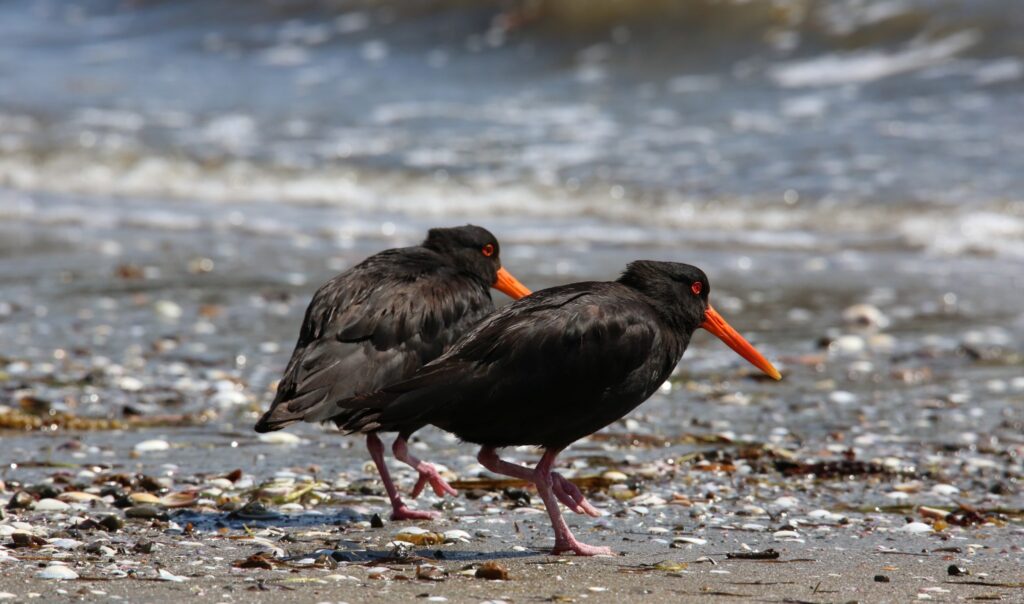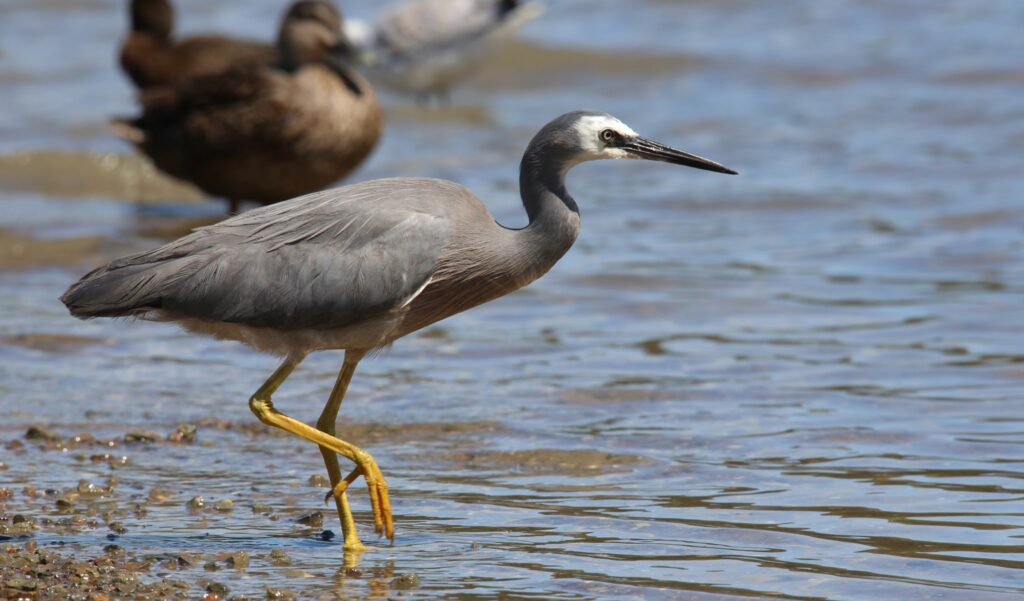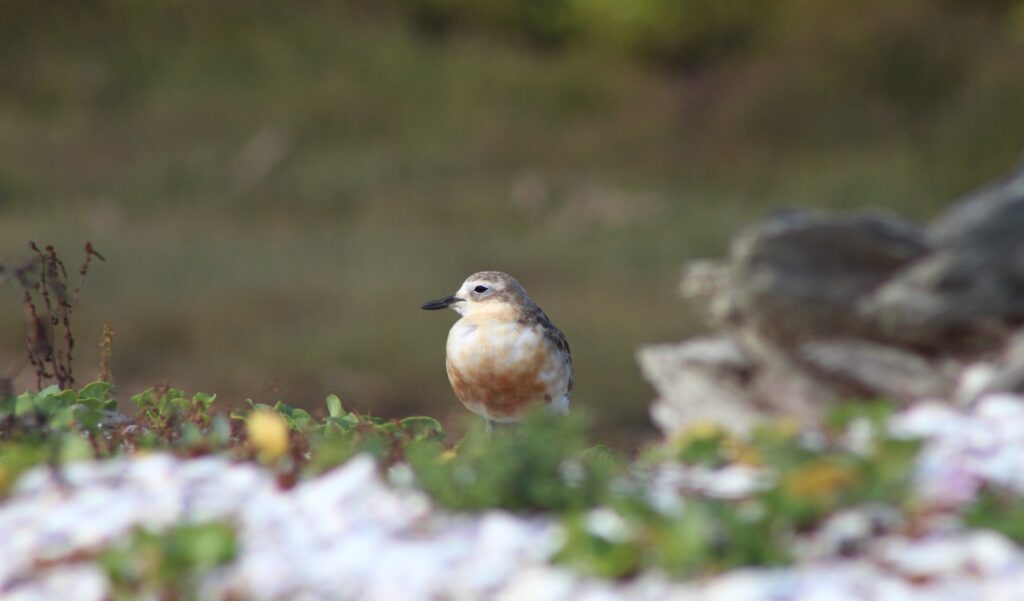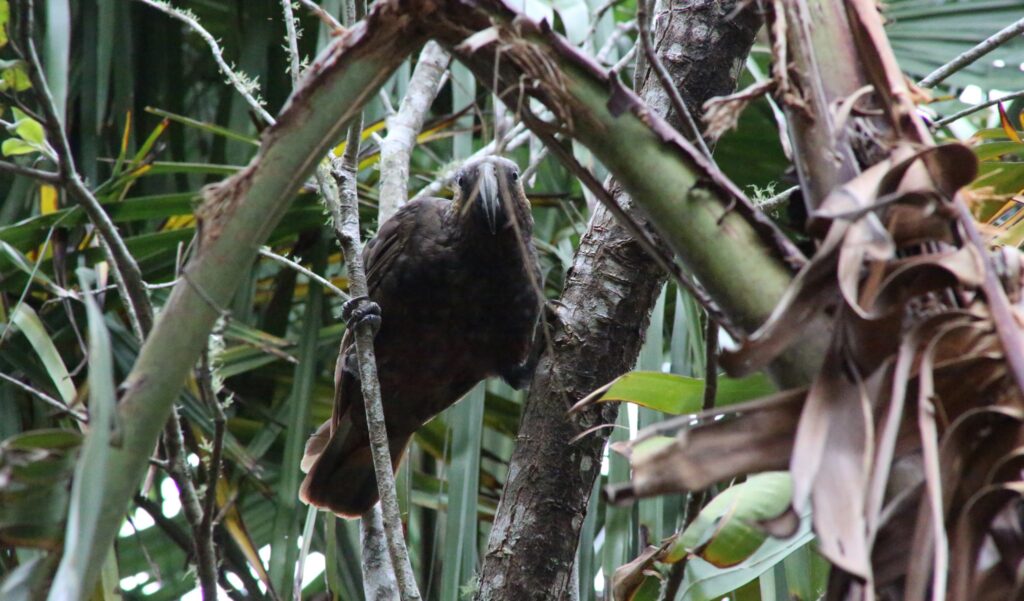Order) Passeriformes
Family) Zosteropidae
Species) Native
Length) 12 cm
Weight) 13 g
Threats) Cats, Rats, Other bird species
Identification
The white-eye is a small songbird immediately recognisable by its distinctive white eye-ring. This quick little bird can be found feeding of flax and kowhais or fruit tree on waiheke.
The White eye also known as a silvereye has olive-green plumage on the head, lower back and upper tail, and mid-grey on the hindneck, sides of neck and upper back. The upper wings are mostly dark olive green, with narrow lines of yellowish green, and the tail is dark olive green. The underparts are whitish-cream on the throat and upper breast, creamy grey on the belly and undertail, the flanks are pinkish-buff, the thighs are white, and the underside of the wings creamy-white. The dark brownish-black bill is fine, short and sharply pointed. The iris is dark reddish-brown, and the legs and feet pale brown.
Juveniles have similar colouring to adults but have a narrower and duller white eye-ring.
Both sexes are alike. The White eye has range of clear often high-pitched and melodious calls including warbles, and trills, often repeated, used in a wide variety of contexts.
They are found in vegetated habitats, including suburban gardens, farmland, orchards, woodlands and forests.
White eyes are well known for flocking especially in winter.
Breeding
Pairs are monogamous and territorial when breeding.
Nesting takes place between August-September and February, peaking in September – November in most localities.
Nests are a well-built, delicate cup woven into small branches and comprising moss, lichen, small fine twigs, hair, spider web and thistledown. Nest are located in branches of trees, shrubs and treeferns, mostly more than 8 metres above the ground.
One or both sexes build nests.
Eggs are pale blue and laid at 24 hour intervals. Two or three clutches may be raised during a season, with 2-4 eggs per clutch (typically 3).
Young are blind and naked when hatched apart from two tiny tufts of down on the head. Their eyes open after 4 days, they are well-feathered 10 days after hatching, and fledge at 9-11 days-old.
Food
White Eyes are not picky eaters they eat a range of small insects such as aphids, caterpillars and flies, also spiders, gleaned from shrubs and trees.
They also feed on a range of small and large fruits including small berries and ripening fruit including grapes, cherries, apples, pears, figs, apricots and peaches aswell as feeding on nectar of native and exotic plants including kowhai, fuchsia, eucalypts and bottlebrushes. They will visit bird feeders more than any other species.
Waiheke Locations
Fruit trees – Many waiheke properties are full of fruit trees most fruit trees produce fruit in spring/summer so watch out for the White Eyes.
Flaxed areas – White Eyes feed on the nectar off flax flowers if there flax flowers are out you will most likely see them competing with the Tui.
Kowhai trees – White Eyes feed on nectar from Kowhai flowers when in bloom. Waiheke have many kowhais located around the island.
The White-Eye are flying birds so they can really be anywhere on Waiheke but not just Waiheke they are all over New Zealand, these are just areas I’ve spotted them and photographed.
References
https://www.nzbirdsonline.org.nz/ (Website used for journalistic purposes)
Gallery
